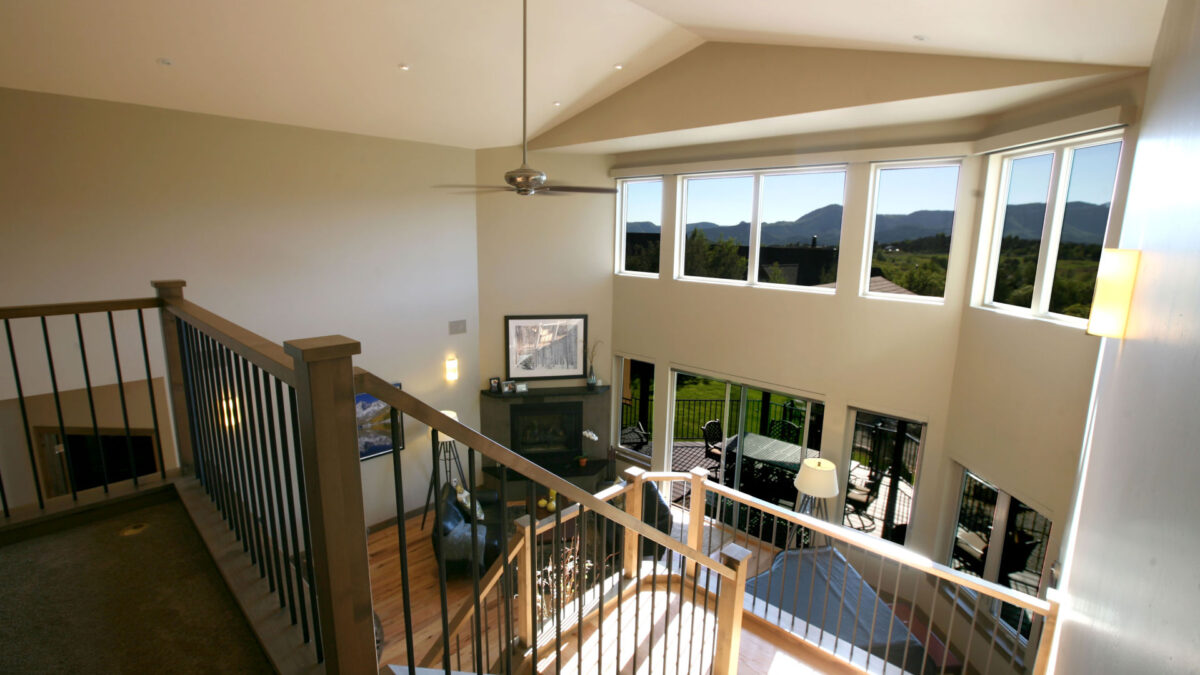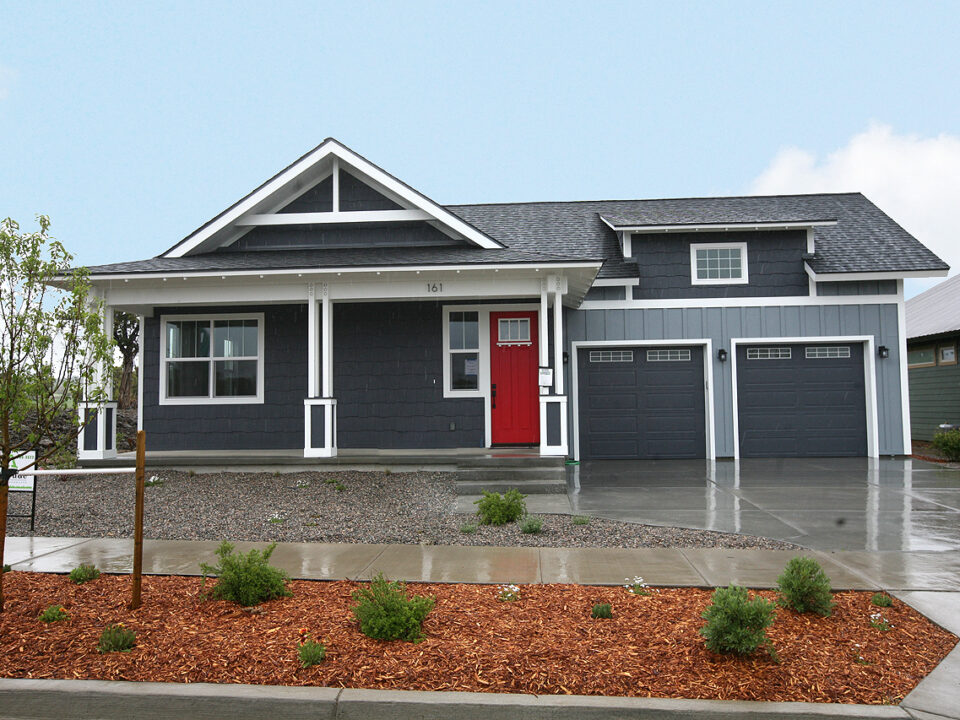
Creating a Dynamic Outdoor Living Space
June 27, 20166 Custom Kitchen Ideas
August 25, 2016Building a custom home that is eco-friendly is becoming more and more commonplace now since more materials are being made available. Though many people are likely familiar with the benefits of traditional eco-friendly building materials and techniques such as adobe, solar panels or recycled tires, there are numerous emerging technologies that have either just been developed or have been known for decades but are just now finding footing in a wider market. While some of these materials can be more expensive than traditional building materials, many end up redeeming these price differences in what they eventually save you in cooling/heating, repairs, etc.
Elements such as these are so exciting because, whether they are creating new standards for efficiency or finding lower impact means to build, they are helping to continually improve the effect we have on the environment. (Even better, many of these materials do both for twice the benefit!) Let’s take a look at these two main ways in which we are striving to meet this goal.
Eco-Friendly from the Source
Many traditional building materials, while still highly reliable, may not come from the most environmentally friendly sources. Thankfully, much progress has been made in the area of building and construction materials that either come from more sustainable sources or are made from other recycled materials. Looking into these and other similar sources for materials while planning a custom home is one of the first steps you can take in building an eco-friendly home.
Wood – While wood is a staple in most building and construction projects, there are ways in which we can lessen impacts of deforestation and similar issues. When purchasing wood to be used in a project you want to consider the source. The Forest Stewardship Council (FSC) is an entity that monitors and certifies raw building material manufacturers to ensure that they adhere to sustainable forestry practices. Standards that they enforce include such practices as preserving the natural habitats from which the wood is harvested and prohibiting the use of hazardous pesticides in those areas. Sourcing materials from such certified and managed forests lessens the impact of unsustainable forestry tactics such as clear cutting an area or using harmful chemicals as pest management.
Other options when it comes to considering wood materials is to choose a type that is lower impact by nature. Many homes are utilizing bamboo more often these days, and not just because it is a beautiful option for any room. Bamboo grows much more quickly than other types of wood. It only takes bamboo three years to reach a mature state that is suitable for harvesting as opposed to the 50-100 years that other woods such as maple and oak need to mature. Bamboo’s natural durability makes it a wonderful option for flooring and has formed a large niche in that very market.
Cork is another great option for flooring. Being harvested from the bark of trees, cork eliminates the need to cut down the tree itself. And, since the cork bark regrows in just three years’ time, this source of materials is very much sustainable. As an added plus, cork is naturally hypoallergenic and anti-microbial.
Consider also sources of wood that doesn’t come directly from live trees. Reclaimed wood, such as wood salvaged from riverbeds or from old buildings, can be an aesthetically interesting choice as well as being environmentally friendly.
We also have options that, while still incorporating wood for its natural useful properties, introduce elements that greatly reduce the amount of wood needed in an area. Wood-Plastic Composite is becoming a very popular decking material for numerous reasons. To begin, using a 50-50 mix of wood fibers and plastic not only reduces that amount of wood that would be required in building a deck, but both the wood and plastic often come from recycled sources. The next time you see those plastic bags you tossed into the recycle bin may just be when you walk out onto your new Wood-Plastic Composite deck.
In combining wood and plastic you get the best of both worlds, the durability of plastic and the pliable strength of wood. And, whereas wood decking may need to be replaced if not given the necessary attention throughout the years, Wood-Plastic Composite is rot and mold resistant and won’t need painting or staining to maintain its integrity.
So far we’ve looked at some options that collect wood from sustainable sources and others that combine wood with other materials to reduce the amount necessary. Still, there are further areas in which we can completely remove wood. Of course, wood has been the standard for framing in home building for centuries, but recycled steel is emerging as a highly reliable and eco-friendly option for home framing. In fact, recycled steel can also simplify the framing process in that the steel beams can be custom designed to fit each project. Aside from the convenience, recycled steel also boasts both the durability of steel that is desirable in high wind and earthquake prone areas and a great reduction in environmental impact.
One company reports that while it may take 40-50 trees to build a 2,000 square-foot home the material required to frame that same home out of recycled steel could be collected from no more than 6 scrapped cars. Using scrapped material not only reduces the energy required to make steel by 75% but also keeps that scrap from ending up in a landfill. With the dual impact of reducing both the number of trees being cut down and the amount of trash to be left in landfills recycled steel has a promising future as a sustainable building material.
Insulation from Sustainable Sources – Yet another area is which recycled materials are making an impact is in insulation. Fiberglass has been go-to in home insulation for many years, but it has some well-known drawbacks that can be circumvented with alternate materials. Cotton insulation is made from recycled cotton materials, such as denim, and, unlike traditional fiberglass insulation, it does not contain formaldehyde. Similarly, recycled newsprint is versatile as an insulation as it can be used in different forms. One simple form is as a blown insulation where the recycled, processed newsprint is professionally blown into the insulation space.
There are other materials that, while not coming from a recycled source, are still eco-friendly. Hemp based insulation is made from fibers of easily grown hemp plants and has the added benefit of being naturally resistant to pests such as moths and beetles. This means that the insulation will not have to be imbued with pesticides, unlike some other insulation materials.
Beginning with materials that lessen your environmental impact is a great start to creating your eco-friendly home. To really reduce the effect your home has on the environment you will also want to consider materials that provide and maintain energy efficiency once you’ve settled in.
Energy Efficient Materials
Of course, many technologies exist these days that make a home energy efficient. Absolutely, these are wonderful options to reduce your environmental impact in your day-to-day life, but to get the most out of your home you want to begin by choosing building materials that will be efficient on their own and serve to amplify the effects of any technology you choose to introduce once the building is done.
Insulation – It will come as no surprise that choosing a highly efficient insulation is one of the easiest and best things you can do to make your home eco-friendly, heating and cooling account for about 50% of a home’s energy consumption. Above, we explored possible insulation materials that are environmentally friendly at their source, here we will look at a material in which the insulating property is its biggest asset (though it does contain materials that are from an eco-friendly source).
Plant-based Polyurethane Rigid Foam is an insulating foam that is manufactured from plants such as bamboo, hemp, and kelp. This rigid foam offers near endless advantages including high moisture and heat resistance, protection against mold and pests and an R-value (a metric used in rating insulating properties) that is higher than fiberglass.
Insulation can also be made very efficient by using different techniques of layering materials that maximize their insulating properties. Creating walls by pouring concrete between two pieces of insulating materials, a technique known as Insulating Concrete Forms, has been shown to reduce as much as 20% energy consumption in houses using this technique versus a traditional wood framed house. Conversely, in a technique called Structural Insulated Panels (SIP), a similar layering effect is used, but this time, concrete panels are on the outside and sandwiches foam insulation inside. Plywood or strand board can also be used as the outer material. In some estimates, this technique can yield as much as 50% in energy savings when compared to traditional building materials.
Windows – It’s well known that windows account for a great amount of heat gained and lost in a house. Of course, double paned windows have been a standard to combat this, but single paned windows have gained an ally in low-emissivity (low-E) windows. Low-E windows have a clear coating of metallic oxide that can reduce heat flow by up to half. This will help to keep the heat of summer out when it’s unwanted, but also keeps it cozy in winter while reducing your heating costs by 10 – 20 percent.
When it comes to building a home to match your eco-friendly lifestyle there are a lot of things to consider and a lot of options to explore. Thankfully, new techniques and materials are being developed all the time that allow for you to make the best choices for your home and location, those discussed here are just some of the most promising materials being worked with today. But, with a little forethought and planning, you can rest easy in knowing that the walls around you were built with the greatest of intentions and the smallest impact on the environment.




